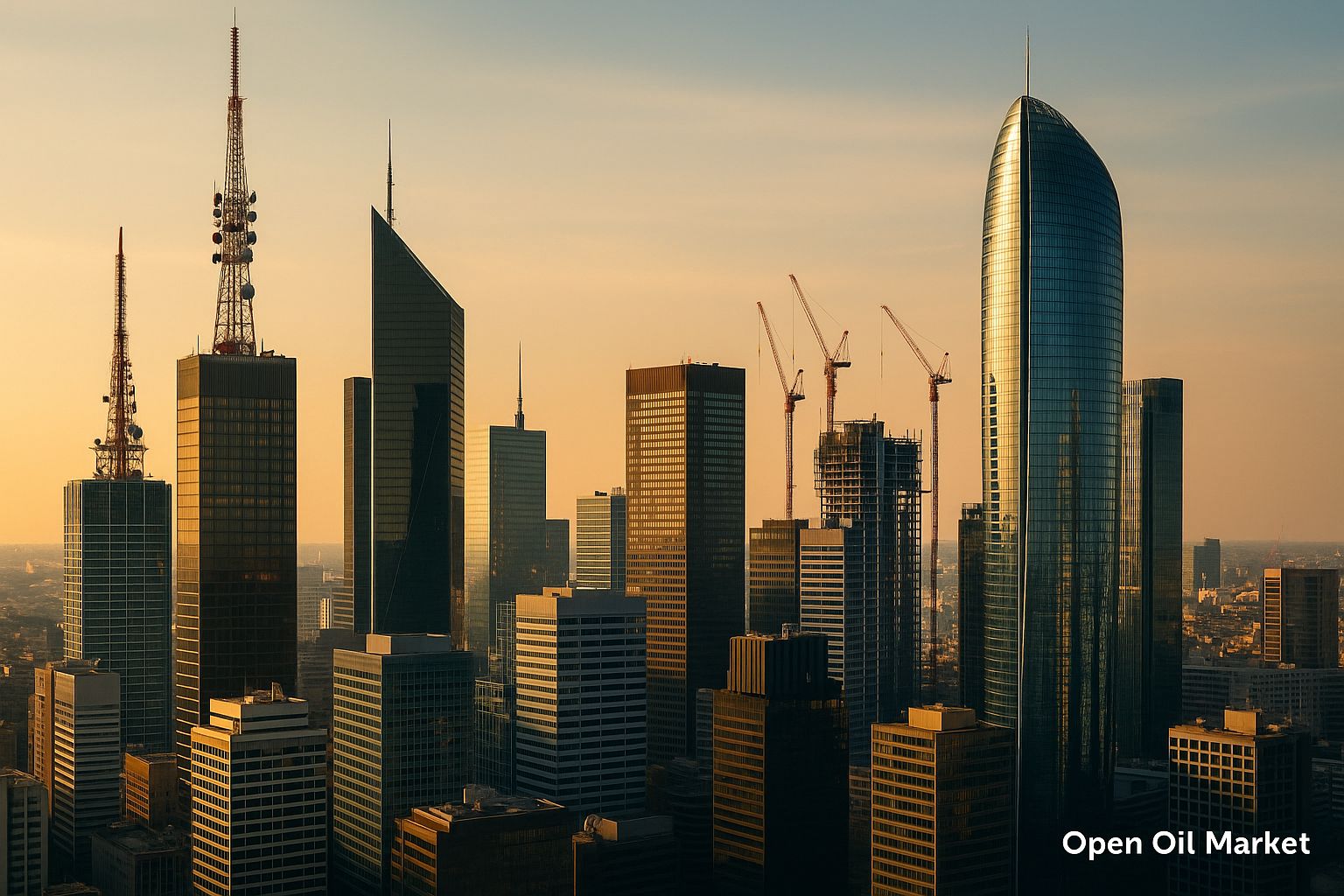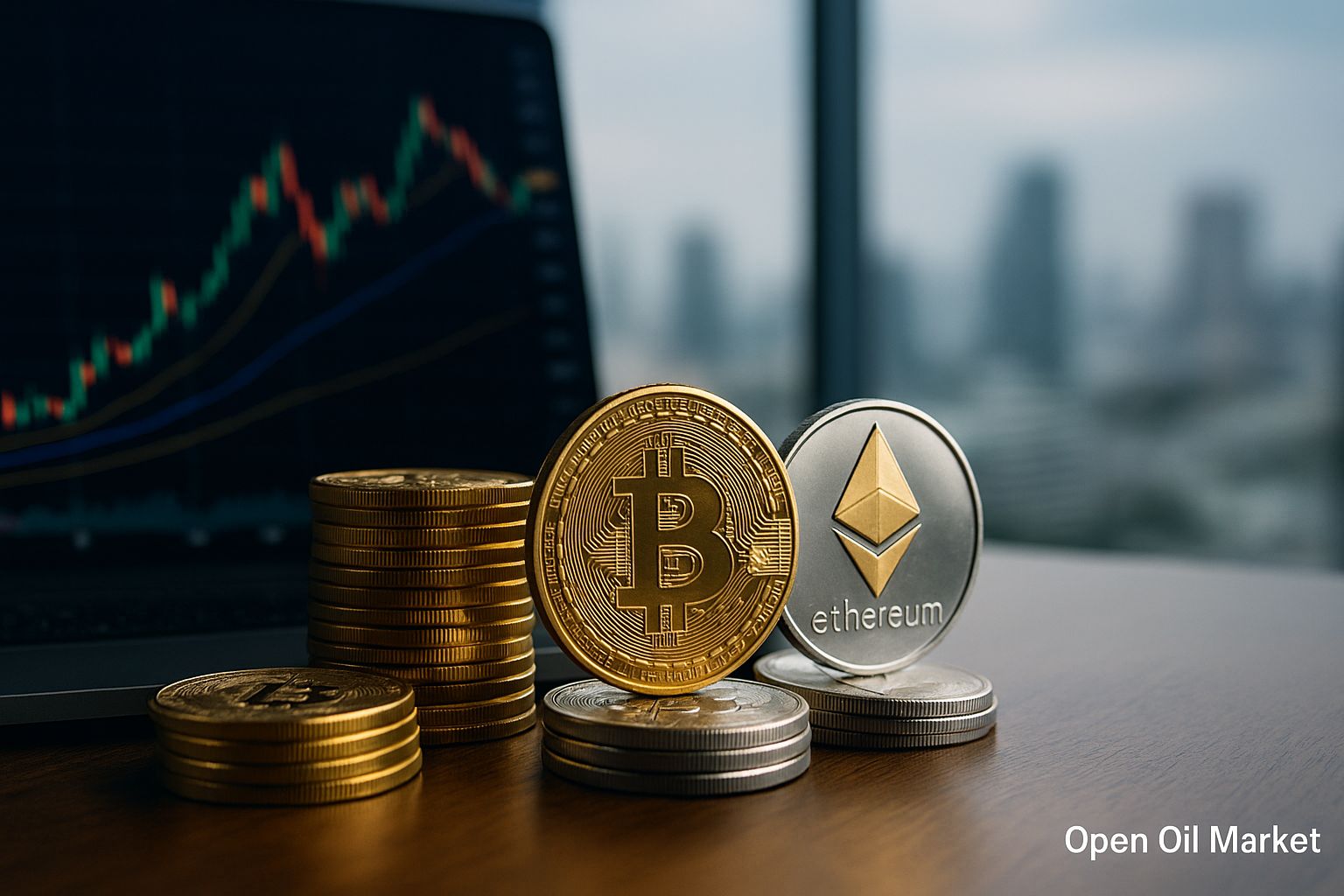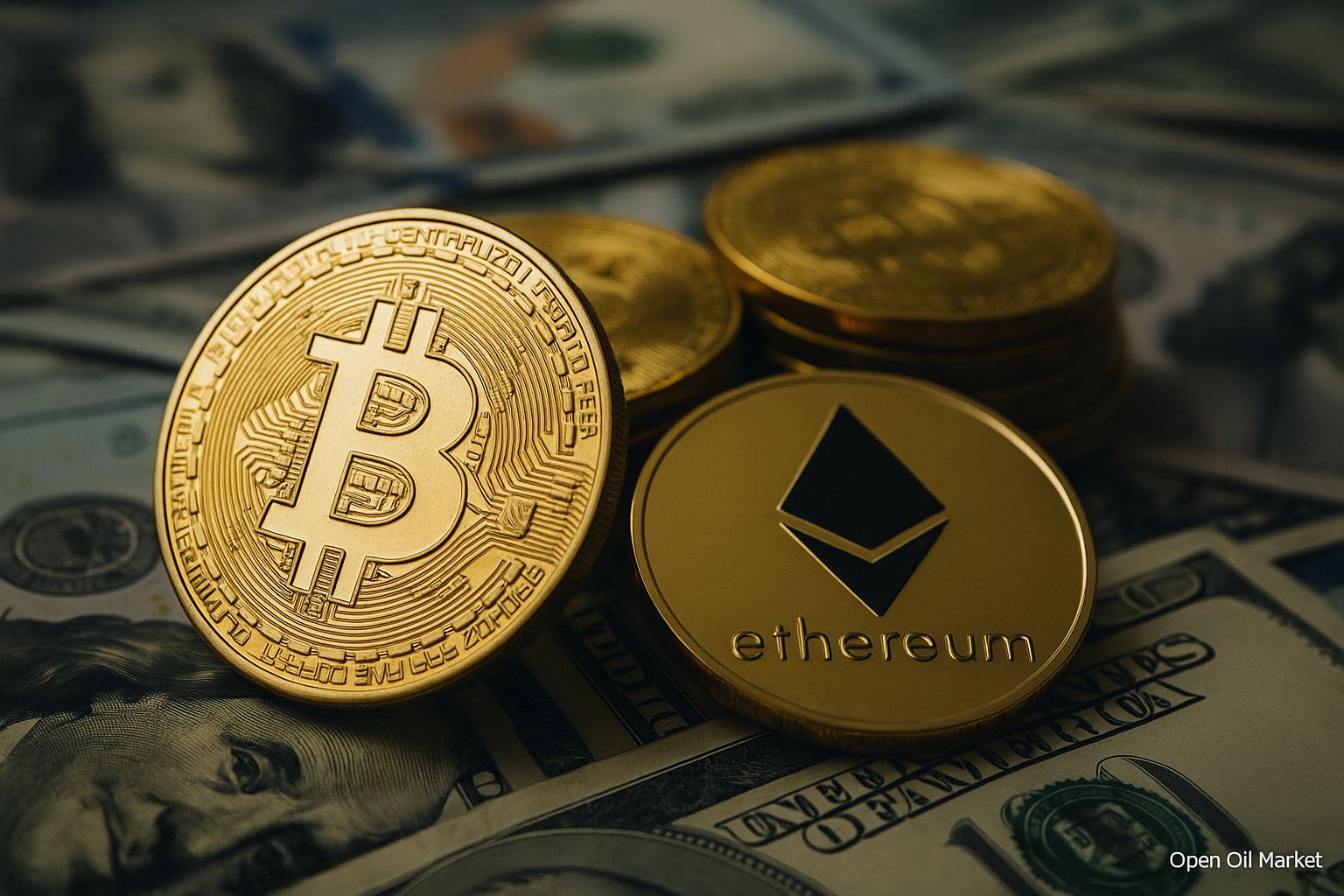
Global Startup and Venture Capital News for November 13, 2025: New ‘Unicorns’, IPO Market Revival, and Crypto Startup Resurgence. A Detailed Overview for Venture Investors and Funds.
By mid-November 2025, the global venture capital market is steadily recovering from the lull of recent years. Statistics indicate that in the third quarter of 2025, global venture capital investment reached approximately $97 billion (almost 40% more than the previous year) – marking the best quarterly performance since 2021 and the fourth consecutive quarter of growth following the "venture winter" of 2022-2023. Investors worldwide are once again actively funding technology startups: record deals are being made, new IPOs are being planned, and major funds are raising fresh capital in the market. Governments across various countries are also increasing their support for innovation, further stimulating the influx of private investments into the startup ecosystem.
Venture activity is growing across all regions. The United States continues to lead, generating about 60% of global investments (with particularly strong funding for artificial intelligence projects). In the Middle East, investment volumes nearly doubled over the year, forming new tech hubs with the support of sovereign funds. Europe is experiencing a resurgence: following recent trends, Germany has outpaced the United Kingdom in attracting venture capital for the first time. India and Southeast Asia are attracting record flows of capital against a backdrop of relatively declining activity in China. The startup scenes in Russia and other CIS countries are also striving to keep pace – new funds and programs are launching in the region, despite sanctions and other restrictions. Overall, the market is experiencing a global venture boom, although investors remain selective and cautious when choosing projects.
Below are the key events and trends defining the current agenda of the venture market as of November 13, 2025:
- The Return of Mega Funds and Large Investors. Leading venture players are raising record funds and are once again actively investing in startups, flooding the market with capital and enhancing risk appetite.
- Record Investments in AI and a New Wave of ‘Unicorns’. Unprecedentedly large funding rounds are elevating startup valuations to unseen heights, particularly in the artificial intelligence sector, leading to the emergence of numerous new ‘unicorns’.
- Resurgence of the IPO Market. Successful public offerings of technology companies and new listing plans confirm that the long-awaited "window" for exits has reopened for venture investors.
- Diversification Across Industries: Not Just AI. Venture capital investments are being directed not only into AI but also into fintech, climate projects, biotechnology, space, and defense technologies – the investment focus is expanding.
- A Wave of Consolidation and M&A. Major mergers, acquisitions, and strategic deals are reshaping the industry landscape, creating new opportunities for exits and accelerated growth of companies.
- A Return of Interest in Crypto Startups. After a prolonged "crypto winter," blockchain projects are once again attracting significant funds and attention from venture capitalists and large corporations.
- Local Focus: Russia and CIS Countries. New funds and initiatives to develop local startup ecosystems are emerging in the region, gradually attracting investor attention despite sanctions and restrictions.
The Return of Mega Funds: Big Money Re-enters the Market
Major investment funds and institutional players are confidently returning to the venture arena, signaling a new wave of risk appetite. Following a downturn in VC fundraising during 2022-2024, leading firms are renewing capital raising initiatives and launching new mega funds, demonstrating faith in market potential. For example, the Japanese conglomerate SoftBank has announced the launch of Vision Fund III, sized at approximately $40 billion, focusing on cutting-edge technologies (AI, robotics, etc.). In the U.S., the firm Andreessen Horowitz is raising a record fund of about $20 billion, which will be the largest in its history and one of the largest in the industry, with a focus on late-stage AI startups. Silicon Valley giant Sequoia Capital recently announced two new venture funds with a total volume of around $950 million.
Sovereign funds in the Gulf region have also become active: Middle Eastern countries are pouring billions of dollars into high-tech projects worldwide and launching large-scale government programs to support the startup sector. At the same time, dozens of new venture funds are emerging across all regions, attracting significant institutional capital for investments in tech companies. The return of such "megastatures" means that startups will soon have even more opportunities to secure financing, and competition among investors for the best projects is intensifying.
Record Investments in AI: A New Wave of Unicorns
The artificial intelligence sector remains the primary driver of the current venture upswing, demonstrating record levels of funding. It is estimated that around half of all venture investments in 2025 will be directed towards AI startups, and global investments in AI may exceed $200 billion by the end of the year – an unprecedented level for the industry. In America alone, AI projects have accounted for up to two-thirds of all venture capital since the beginning of 2025. The total valuation of the ten largest companies in the AI sector has already approached $1 trillion. Investors attribute the excitement to AI technologies promising to dramatically increase efficiency across multiple domains and open multi-trillion-dollar markets, ranging from business automation to personal digital assistants. Despite warnings from experts about a potential "bubble," funds continue to increase their investments, fearing they may miss the next technological revolution.
It is not surprising that the influx of capital into AI is accompanied by the emergence of numerous new ‘unicorns’ and the concentration of funds among leaders. Currently, about 70% of all venture investments in the U.S. go to a handful of companies leading the AI race. For example, the French startup Mistral AI raised around $2 billion in September (a record round for Europe), while American OpenAI earlier secured a one-time investment of $13 billion – an unheard-of deal that boosted the company's valuation to astronomical heights. Such mega-rounds inflate startup valuations, while simultaneously concentrating resources and talent in promising directions, laying the groundwork for future breakthroughs.
In recent weeks, several companies have announced significant fundraising, confirming the return of "big checks" to the market. Notable examples include:
- Synthesia (UK) – $200 million at an estimated valuation of ~$4 billion for developing an AI-based video generation service (led by the GV venture fund from Alphabet).
- Fireworks AI (USA) – $250 million in a Series C round (valuation around $4 billion) to scale its AI platform in genomics and healthcare.
- Armis (USA) – $435 million in a pre-IPO round at a valuation of $6.1 billion to enhance its IoT cybersecurity platform (major investors include Goldman Sachs in partnership with CapitalG).
Revival of the IPO Market and Exit Prospects
Against the backdrop of rising valuations and capital inflow, technology companies are once again eagerly preparing to go public. After nearly two years of inactivity, a long-awaited surge in IPOs is emerging as a primary exit strategy for venture funds. Several high-profile listings have confirmed the opening of a "window" of opportunities: for instance, the American fintech unicorn Circle successfully conducted an IPO at a valuation of around $7 billion – this debut has restored investor confidence in the market's appetite for new tech issuers. Following this, several large private companies are eager to take advantage of the favorable market conditions. Insider reports suggest that OpenAI, the creator of ChatGPT, is considering its own IPO in 2026 with a potential valuation of up to $1 trillion, which would be unprecedented for the industry. The blockchain company ConsenSys (developer of the MetaMask wallet) is also gearing up for listing in 2026.
Improved market conditions and the gradual resolution of regulatory uncertainty (such as the adoption of stablecoin regulations and the prospects for approving exchange-traded Bitcoin ETFs) are instilling confidence in startups that the public market has once again become a viable mechanism for capital raising and exits for investors. Analysts predict that the number of high-profile tech IPOs will increase in the next couple of years – provided ongoing high demand for new listings from institutional investors is maintained. The return of successful IPOs is crucial for the venture ecosystem: profitable exits allow funds to realize gains and redirect freed-up capital into new projects, closing the venture investment cycle.
Diversification Across Industries: Not Just AI
In 2025, venture investments encompass a significantly broader range of industries and are no longer limited to just artificial intelligence. Following last year's downturn, the fintech sector is experiencing a revival: major funding rounds are occurring not only in the U.S. but also in Europe and emerging markets, fueling the growth of promising financial services. Climate projects are also actively attracting capital: for example, the Australian startup Uluu raised 16 million Australian dollars for developing biodegradable plastic from seaweed – a reflection of the global trend toward sustainable technologies. Interest in space and defense innovations is increasing: the Bulgarian company EnduroSat raised $104 million for the production of small communication satellites, while the American defense startup Anduril Industries secured $2.5 billion in investments mid-year, doubling its valuation to $30 billion.
The appetite for biotechnology and medical tech is also returning: new developments in pharmaceuticals and digital health are once again attracting capital as the sector rebounds from valuation corrections. Notably, the healthcare sector emerged as the third largest by total venture investments in the third quarter (approximately $15-16 billion). One of the latest examples is the American startup Forward Health, working in preventive medicine: the company raised $225 million in a Series D round (investors – SoftBank and Founders Fund), raising its valuation above $1 billion, thereby achieving "unicorn" status. Additionally, amid increased interest in safety, investors are supporting projects in the defense-tech sector, and a partial restoration of trust in the cryptocurrency industry has allowed some blockchain startups to begin attracting funding once again. The expansion of the industrial focus makes the startup ecosystem more resilient and reduces the risk of overheating in specific segments.
Consolidation and M&A: Big Players Get Bigger
High startup valuations and intense competition are stimulating a new wave of consolidation in the industry. Major mergers and acquisitions are again taking center stage, reshaping the balance of power in the markets. In October, American investment bank Goldman Sachs announced the acquisition of the venture firm Industry Ventures for approximately $1 billion – one of the largest deals of the year within the venture sector, reflecting an increasing interest from banking capital in technology assets. Technology giants are also re-engaging: eager to acquire key technologies and talent, corporations are acquiring promising AI and cybersecurity startups. A notable example is the acquisition of Israeli cybersecurity developer Wiz by Google for approximately $32 billion, which marks a record sum for a deal in Israeli technology.
Consolidation is also impacting the crypto industry. Industry sources suggest that payment giant Mastercard is close to acquiring a blockchain infrastructure startup (a provider of technologies for stablecoins) for up to $2 billion. This move would represent one of Mastercard's largest investments in the digital asset space, solidifying the efforts of traditional financial companies to establish a foothold in the cryptocurrency market. Overall, the rise in M&A activity reflects the maturation of the startup ecosystem: more mature companies are merging or being acquired by larger players, while venture investors are gaining much-anticipated opportunities for profitable exits.
A Return of Interest in Crypto Startups
Following a prolonged downturn during the "crypto winter," the market for blockchain startups is noticeably reviving: venture investments in the crypto industry are once again on the rise. In October 2025, funding for cryptocurrency projects sharply increased thanks to several large funding rounds. The leader was the American project Polymarket, which raised a record $2 billion (estimated valuation of approximately $9 billion) – one of the largest venture deals of the year outside the AI sector. Furthermore, infrastructure solutions for digital assets are also starting to receive support from funds. For instance, the American startup Hercle, developing a platform for issuing stablecoins, raised approximately $60 million in funding.
Simultaneously, the cryptocurrency market is becoming more mature – institutional investors are returning to the realm of digital assets. Easing regulatory uncertainty (for example, the introduction of clear rules for stablecoins and expectations for the approval of exchange-traded crypto ETFs) combined with financial giants’ participation in funding the industry is supporting the influx of capital. Crypto startups that have survived the cleansing of speculative projects are gradually restoring trust and regaining attention from venture capitalists and corporations.
The Local Market: Russia and the CIS
In Russia and neighboring countries, the startup ecosystem is also striving to evolve amid the global upswing. Over the past year, several new venture funds have emerged in the region – part of the local capital is beginning to flow into the technology sector. Government institutions and major corporations have intensified support programs: new accelerators, specialized funds, and grant competitions for innovative projects have been launched. Although the total volume of venture investments in Russia and the CIS remains relatively small, and serious barriers persist (high interest rates, sanctions, etc.), the most resilient startups continue to attract funding and grow, focusing on local market niches. The gradual formation of a venture infrastructure sets the stage for the future – for when external conditions improve and global investors can once again work actively with the region.
Conclusion: Cautious Optimism
A cautious optimism has taken hold in the venture industry. On one hand, the rapid increase in valuations – particularly in the AI segment – is reminiscent of the dot-com bubble, raising concerns about potential market overheating. On the other hand, the current excitement concentrates immense resources and talents in new technologies, laying the foundation for future innovative breakthroughs. As the end of 2025 approaches, it has become evident that the startup market has revived: record levels of funding are being recorded, high-profile IPOs are on the horizon, and funds are forming unprecedented pools of capital for investment. At the same time, investors have become more discerning, directing resources primarily towards the most promising projects with clear business models.
The main question for the future is whether high expectations surrounding the AI boom will be justified and whether other sectors can catch up in attracting capital. For now, however, the appetite for innovation remains high, and market participants are looking ahead with moderate enthusiasm, anticipating further balanced growth of the venture ecosystem.




